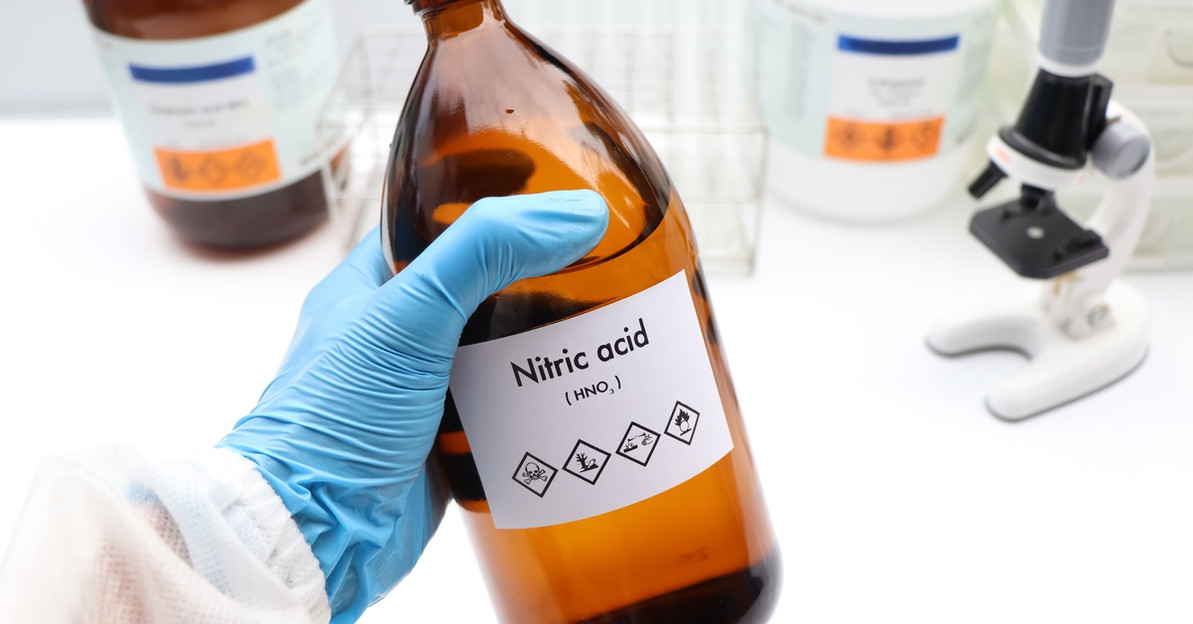Top Uses of Nitric Acid in Laboratory Operations
Nitric acid is an incredibly versatile and essential chemical in laboratory settings thanks to its strong oxidizing properties. Its applications are pivotal for research, testing, and educational efforts, from sample preparation to advanced material studies. Explore the uses of nitric acid in laboratory operations, highlighting its significance and practical applications for scientists, researchers, and technical professionals.
Sample Preparation
Nitric acids are indispensable in sample preparation for analytical procedures. Their strong oxidizing capability allows them to break down complex matrices, such as biological samples, rocks, and minerals, into simpler forms suitable for analysis. This reaction is especially critical in spectroscopy and chromatography, where precise quantification of elements relies on the effective digestion of samples.
For instance, preparing environmental samples for heavy metal tests often involves nitric acid due to its high reactivity. This foundational role ensures that results obtained are consistent and accurate, making nitric acid a standard reagent in labs worldwide.
Metal Analysis
Nitric acid is widely used in metal analysis because it dissolves metals efficiently. Combined with other acids like hydrochloric acid, it forms aqua regia, a solution capable of dissolving even noble metals such as gold and platinum. Metal samples dissolved in nitric acid benefit elemental analysis using advanced techniques like atomic absorption spectroscopy (AAS) and inductively coupled plasma mass spectrometry (ICP-MS).
This effect makes nitric acid invaluable for industries such as metallurgy and environmental science, where precise characterization of metal content is crucial. Its effectiveness ensures high-quality data for decision-making and research.
Chemical Compound Synthesis
Nitric acid plays a vital role in organic and inorganic chemical synthesis, where it functions as a precursor in producing nitrates like ammonium nitrate (a key component in fertilizers). Additionally, nitric acid orchestrates the production of nitro compounds essential for dyes, pharmaceuticals, and other industries.
Its application extends to oxidation reactions critical in organic synthesis, paving the way for creating complex molecules. By enabling the formation of various high-demand chemicals, nitric acid supports innovations in fields like agriculture, manufacturing, and medicine.
Acid-Base Titrations
As a strong acid, nitric acid is a key reagent in acid-base titration processes, determining the alkalinity or basicity of substances, a critical parameter in laboratories analyzing water quality, pharmaceuticals, and more. Compared to weaker alternatives, the sharp endpoint observed during titrations involving nitric acid makes it highly reliable. Its consistent molarity ensures reproducibility across experiments. Widely used in industrial and educational labs, nitric acid titrations maintain precision and accuracy in quantitative chemical analysis.

Environmental Testing
Environmental labs depend heavily on nitric acid for pollutant analysis in water, soil, and air samples. It facilitates the breakdown of samples to detect heavy metals, nutrients, and toxic substances. Using nitric acid prepares water samples for trace element analysis by removing organic matter and releasing target analytes.
This testing process is vital in compliance with regulatory standards and environmental protection initiatives. Nitric acid’s ability to handle intricate matrices produces reliable results that maintain sustainability and safeguard public health.
Explosives Research
Nitric acid has a long history of synthesizing explosive compounds like nitroglycerin and trinitrotoluene (TNT). Its ability to nitrify other molecules makes it a valuable reagent in controlled experiments related to energetic materials and pyrotechnic compounds.
These studies occur under stringent safety protocols in the defense and material science industries. Despite the risks, this application highlights nitric acid’s powerful reactivity and role in scientific advancements in controlled environments.

Material Testing
Nitric acid is a trusted reagent for evaluating metal corrosion resistance and studying material degradation. Its corrosive properties make it ideal for simulating harsh environmental conditions to test the durability of metals and alloys.
For example, nitric acid is used to identify impurities in stainless steel and measure corrosion rates in industrial equipment. These tests provide crucial data for aerospace, construction, and manufacturing industries so materials meet safety and performance standards. By exposing weaknesses, nitric acid improves material quality and longevity.
Photographic and Imaging Studies
Before the digital age, nitric acid significantly developed traditional photography by etching and creating silver nitrate compounds. Its use persists in modern imaging techniques and scientific studies of surface features.
Researchers use the acid to etch metals, ceramics, and other materials for microscopic examination. This process is vital for applications in materials science and semiconductor research. Nitric acid’s ability to create sharp, detailed images of structures continues to solidify its utility in historical and contemporary photographic methods.
Educational Demonstrations
Nitric acid remains a staple in educational labs thanks to its ability to showcase fundamental chemical principles. Its reactive properties are ideal for demonstrating oxidation-reduction reactions, acid-metal reactions, and decomposition processes. Teachers and professors utilize nitric acid safely to provide visual and engaging demonstrations, inspiring curiosity among students.
Beyond practical use, nitric acid offers valuable learning opportunities about handling strong acids and understanding their reactivity. Educational labs rely on its unique properties to teach complex topics in chemistry effectively.
Pharmaceutical Development
Nitric acid is instrumental in the pharmaceutical industry, particularly in synthesizing active pharmaceutical ingredients (APIs). It contributes to creating nitro-based intermediates crucial in drug formulation.
This acid also aids in developing purity profiles and enabling quality control processes by breaking down complex samples. Laboratories use nitric acid for methods like high-performance liquid chromatography (HPLC) testing, which demands precision. Thanks to this testing, medicines meet strict regulatory standards, reinforcing nitric acid’s importance in public health advancements.
Safety Considerations and Best Practices
Nitric acid’s powerful reactivity requires strict handling protocols to maintain laboratory safety. Always store it in a ventilated area away from incompatible materials, and use protective equipment, including gloves and goggles. Proper handling procedures, such as using nitric acid within fume hoods, minimize exposure risks. Education about its hazards ensures laboratory teams stay informed and work safely.
Disposal and Neutralization Methods
Proper disposal of nitric acid is crucial to prevent environmental harm. Neutralization using a base, like sodium bicarbonate, converts it to a safer substance before disposal. Laboratories should adhere to local hazardous waste management regulations and utilize designated chemical disposal facilities.
Developing detailed waste protocols, including spill containment plans, upholds comprehensive safety measures. Effective disposal practices maintain environmental and workplace safety standards, aligning with global sustainability goals.
The many uses of nitric acids in laboratory operations underscore the acid’s importance in science and industry. From enhancing analytical techniques to driving sustainable innovations, nitric acid’s impact is far-reaching.
Recent Posts
-
The Role of Desiccants in Protecting Hygroscopic Chemicals
Hygroscopic chemicals readily absorb moisture from the surrounding environment, leading to compromis …May 19th 2025 -
All About Pairing Containers With Corrosive Substances
Handling corrosive substances is critical in many industries, including manufacturing, pharmaceutica …May 12th 2025 -
Why Solvent Purity Is Crucial in the World of Chemistry
When producing accurate and reliable results in chemistry, solvent purity is non-negotiable. Many se …May 11th 2025




